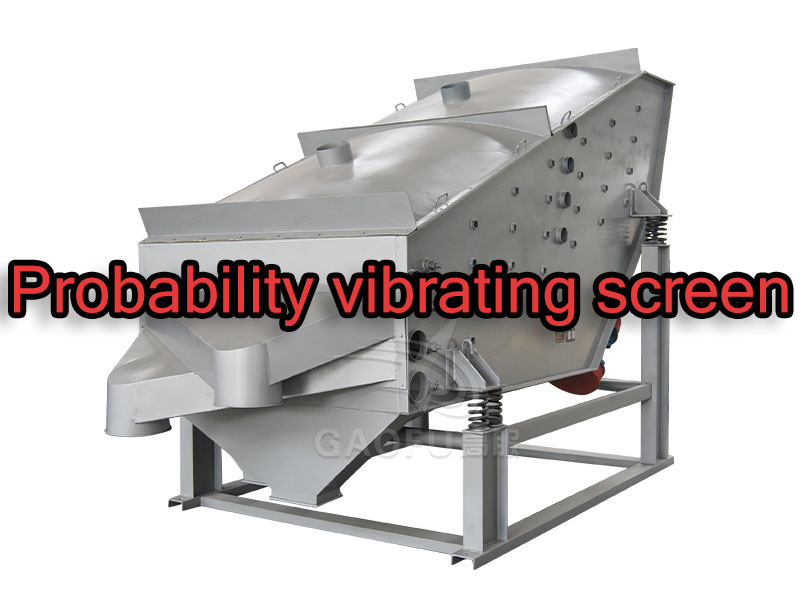In the mining and materials processing industries, efficiency and precision in screening operations are critical for optimizing production and ensuring high-quality output. Among the various screening technologies available, the probability vibrating screen stands out as the first choice for material classification due to its superior performance, high efficiency, and ability to handle a wide range of materials.

Why Choose a Probability Vibrating Screen?
The probability vibrating screen is a state-of-the-art screening machine designed to improve material separation efficiency. Unlike traditional screening equipment, this advanced system uses a unique motion trajectory and optimized screen mesh design to increase screening accuracy and capacity. The key advantages of using a probability vibrating screen include:
- High Screening Efficiency – The probability screening method ensures precise material separation, reducing product loss and improving overall yield.
- Large Processing Capacity – This equipment is ideal for large-scale industrial operations, as it can handle significant volumes of material with minimal downtime.
- Multi-Layer Design – The multi-layer structure allows for the classification of different particle sizes in a single operation, enhancing productivity and reducing operational costs.
- Minimal Blockage – The specialized design prevents material clogging, ensuring a continuous and smooth screening process.
Wide Range of Applicable Materials
One of the standout features of the probability vibrating screen is its versatility. It is specifically designed to handle various types of powders, minerals, and granular materials, making it suitable for multiple industries, including mining, chemical processing, construction, and food production.
Commonly Screened Materials
- Industrial and Mineral Powders
- Dry mortar powders – Used in the construction industry for high-strength bonding and plastering applications.
- Manufactured sand & natural sand – Essential components for concrete production and building materials.
- Quartz sand – Widely used in the glass industry, electronics, and silicon-based products.
- Perlite & dolomite – Common in insulation, filtration, and soil conditioning applications.
- Calcite & feldspar – Fundamental raw materials for ceramics, glass, and industrial fillers.
- Food and Chemical Granules
- Granulated sugar – Used in food production, requiring precise particle size control for quality consistency.
- Raw salt & edible salt – Essential commodities that need uniform granulation for both industrial and consumer applications.
Enhancing Productivity with Advanced Screening Technology
By adopting a probability vibrating screen, industries can achieve higher throughput rates, reduced energy consumption, and improved material quality. This cutting-edge technology is revolutionizing material classification processes, making it an indispensable tool for modern industrial applications.
For businesses looking to enhance their screening efficiency and material handling capabilities, the probability vibrating screen is the ultimate solution. Its robust design, exceptional performance, and adaptability to various materials make it the premier choice in the mining and processing industries.
